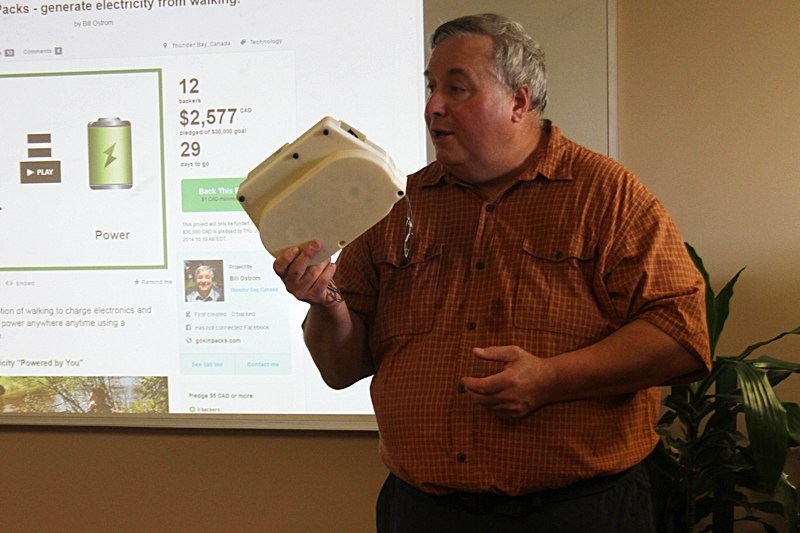THUNDER BAY -- Bill Ostrom is an avid canoeist with sleep apnea and needed a way to charge batteries on two-week trips.
“Solar is great, and I will use that,” Ostron said. “But if it’s cloudy or raining for five, six days on that trip, I need another alternative. Walking portages or walking long trails will give me that choice with Go Kin.”
Ostrom is the creator of Go Kin Packs and its 30-day Kickstarter campaign was launched Wednesday at the Northwestern Ontario Innovation Centre.
The Go Kin fits into the bottom of a specially designed packsack or fanny pack. Two cords are attached to the user’s shoes so the motion of walking generates electricity which can then be used to charge batteries and electronics.
The fundraising goal is $30 thousand, but Ostrom says the campaign will act more as a market analysis.
“Kickstarter is primarily not about raising the money,” he said. “The $30 thousand we have will be used to tell us how our product’s being accepted in the marketplace, what people think of it and how it might be used.”
Judy Sander, the manager of the Innovation Centre, says it will be interesting to see how the product develops.
“I think the initial buyers will be like me and they’ll just want a way to charge (electronics),” she said.
“I also think that there’s this health benefit in this ability to walk and maybe even monitor how much energy is generated and have that whole connection to exercising and generating power.”
The Go Kin is expected to go on sale in November and will have a $325 to $400 price tag.
“It is going to be a little more expensive, especially initially,” Ostrom said, adding that the price will go down as more business is generated.
Ostrom hasn’t approached any retailers yet.
“We’re that early in the process,” he said.
“We want to keep the money coming in going right back to the product. If we’re able to sell them in the thousands, then that will allow us to get our margins down and be able to explore a wholesale-retail relationship, but right now we will sell directly to the user.”
The product itself is in its second-to-last prototype stage. The size is still being refined because the current model is a third bigger than it needs to be, according to Ostrom.
“That was primarily because the circuit board is three inches by three inches,” he says. “We can make it a different shape and cut out a lot of the wasted size.”
